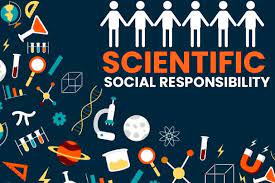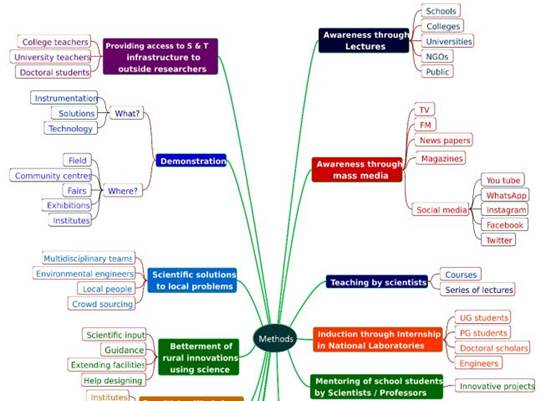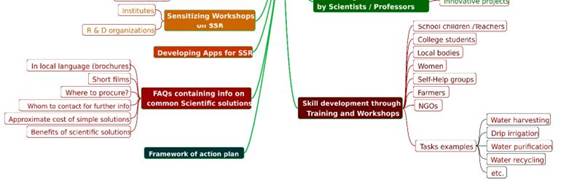Description

Disclaimer: Copyright infringement not intended.
Context
- Government has launched guidelines on Scientific Social Responsibility (SSR), on the lines of Corporate Social Responsibility (CSR), on National Technology Day.
Scientific social responsibility
- It is the ethical obligation of knowledge workers in all fields of science and technology to voluntarily contribute their knowledge and resources to the widest spectrum of stakeholders in society, in a spirit of service and conscious reciprocity.
Objective
- The main objective of SSR policy is to harness the voluntary potential that is latent in the country’s scientific community to strengthen science and society linkages so as to make S&T ecosystem vibrant.
- This primarily involves bridging science-society, science-science and society-science gaps, thereby bringing trust, partnership and responsibility of science at an accelerated peace towards achieving social goals.
This specifically implies:
- Science-society connect: Facilitating inclusive and sustainable development by transferringthe benefits of scientific work to meet existing and emerging societal needs.
- Science-science connect: Creating an enabling environment for the sharing of ideas and resources within the knowledge ecosystem.
- Society-science connect: Collaborating with communities to identify problems and develop scientific and technological solutions.
- Cultural change: Inculcating social responsibility among the individuals and institutions practicing science; creating awareness about SSR within society; and infusing scientific temperament into day-to-day social existence and interaction

Broad Guidelines
SSR guidelines are to be implemented through the following specific strategies:
- All Central Government Ministries and State Governments would plan and strategize their SSR in accordance with their respective mandates.
- Every knowledge institution would prepare its implementation plan in consultation with an identified knowledge based institution called “Anchor Scientific Institution (ASI)” for achieving its SSR goals and prepare its SSR code of conduct that ensures transparency, diversity and equity.
- All knowledge workers would be sensitized by their institutions as well as by Anchor Scientific Institution about their ethical responsibility to contribute towards the
- Scientific Social Responsibility (SSR) Guidelines betterment of society and achieving national developmental and environmental goals.
- Every knowledge worker is expected to contribute at least ten person-days in a year towards SSR over and above their routine/regular work except those in administration or are involved directly in the management of SSR implementation. While the knowledge worker would be given choice in choosing the SSR activity, it should necessarily pertain to making S&T ecosystem vibrant and responsive towards societal needs.
- There should be an SSR assessment cell in each institution including Anchor Scientific Institution to periodically assess institutional projects and individual activities. Each knowledge institution would publish an annual SSR report.
- Appropriate indicators for periodic assessment of SSR activities pertaining to input, process, output/outcomes need to be developed at institutional level. However, institutions would keep track of the SSR activities of individual knowledge workers in their organization towards collation of input in their Annual Report. The impact of SSR activities needs to be measured in terms of short-term, medium-term and long-term time frames.
- Individual and institutional SSR activities should be adequately incentivized, including with necessary budgetary support.
- Individual SSR activities should be given due weightage in performance evaluation of the knowledge worker, such as the performance-based assessment system (PBAS) used to evaluate the output of university and college teachers.
- SSR activities and projects of a knowledge institution would not be outsourced or subcontracted.

Methods

Benefits
SSR has the potential to bring scientific and innovative solutions to societal problems, especially marginalized sections of society, thereby transforming the country. Some of the envisioned benefits of SSR include:
- Expanding the domain of science and its benefits to the community. Encouraging students into science through handholding and nurturing their interest.
- Creating an opportunity for cooperation and sharing of S&T resources in laboratories with other researchers in universities and colleges.
- Providing training for skill development and upgrading scientific knowledge.
- Helping MSMEs, Startups and informal sector enterprises in increasing their overall productivity.
- Facilitating scientific intervention in rural innovation.
- Empowering women, disadvantaged and weaker sections society through scientific intervention.
- Identification of best practices and success models on SSR for replication with multiplier effect in the country.
- Facilitating actions towards addressing Technology Vision 2035 Prerogatives and Sustainable.
- Development Goals (SDGs) of the country such as water, ecology, health and livelihood.
Conclusion
- The policy envisages strengthening science-society linkages in an organic manner by building synergy among all the stakeholders so as to usher in a cultural change in the conduct of science for the benefit of society at large in the country.
https://www.pib.gov.in/PressReleasePage.aspx?PRID=1845323
https://dst.gov.in/sites/default/files/SSR%20Guidelines%202022%20Book_0.pdf
1.png)
















